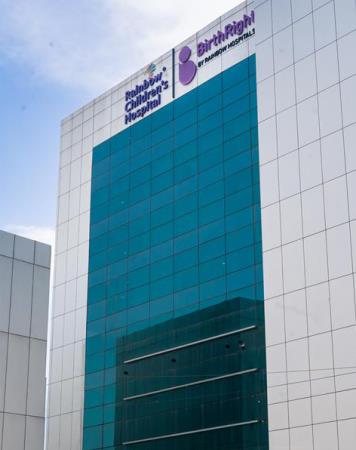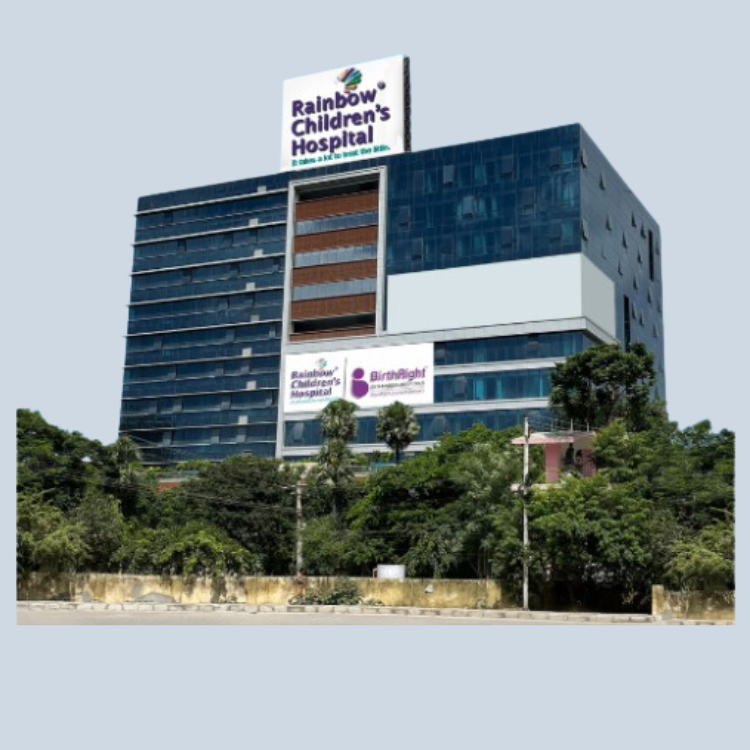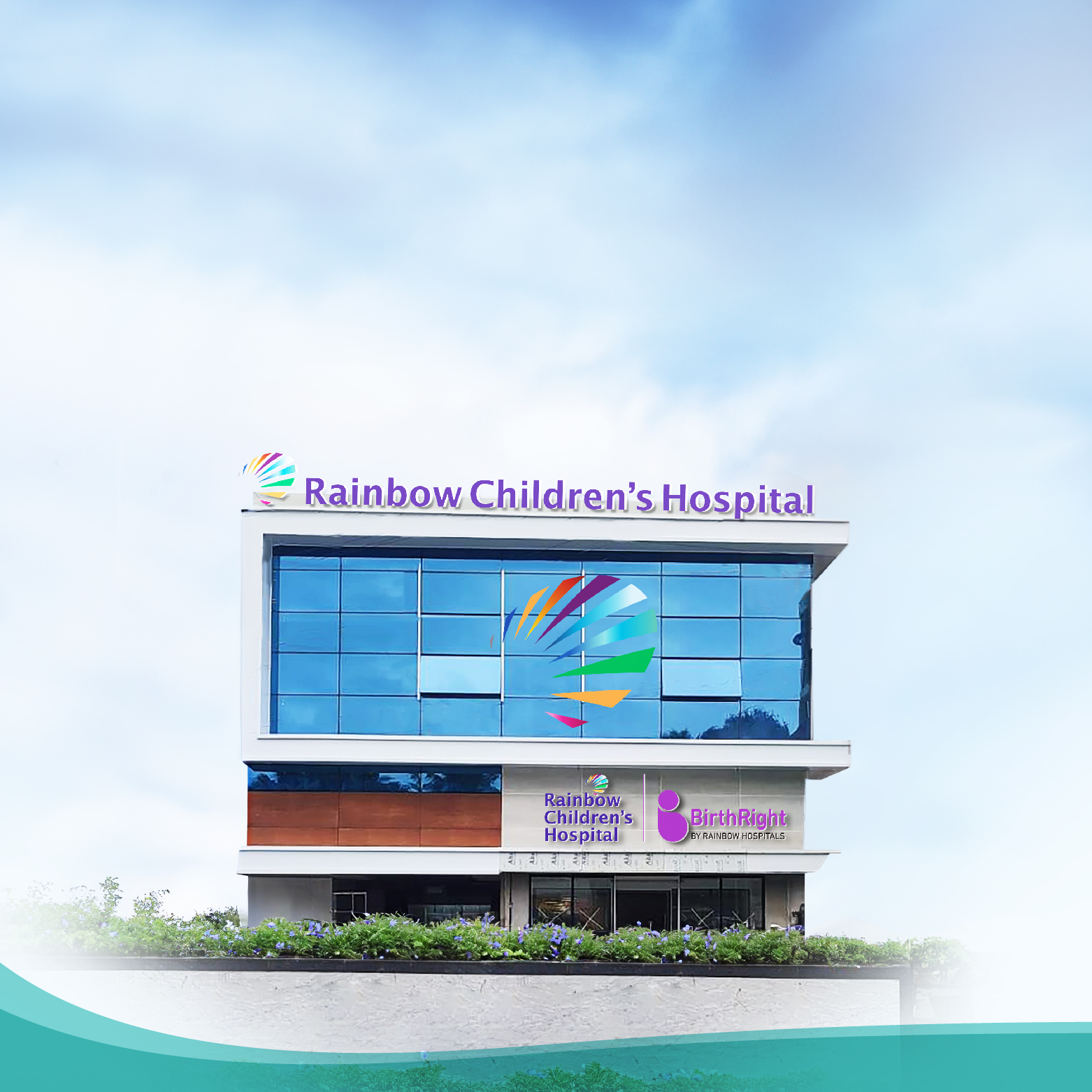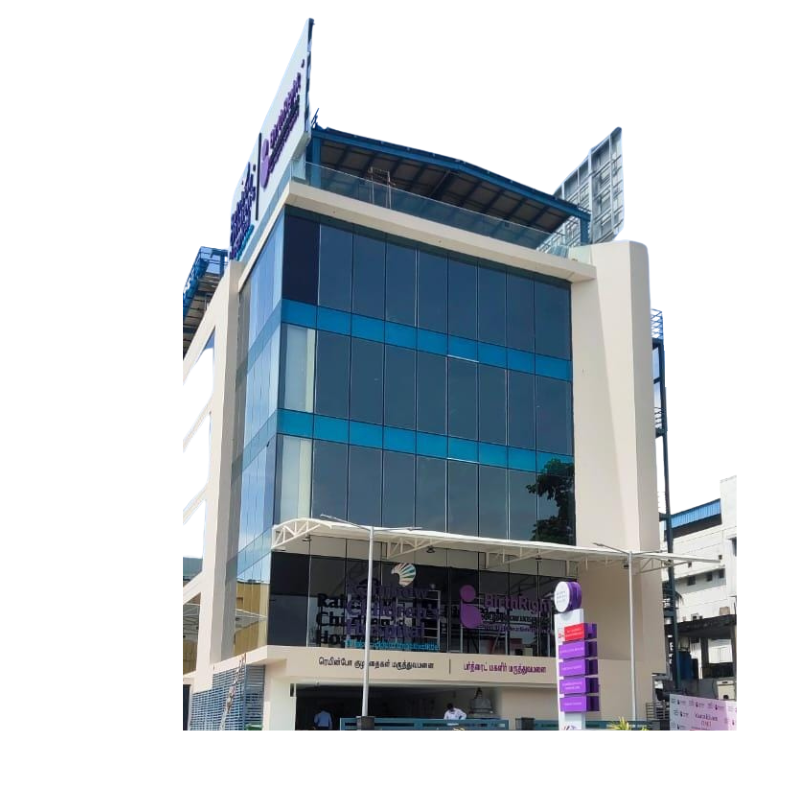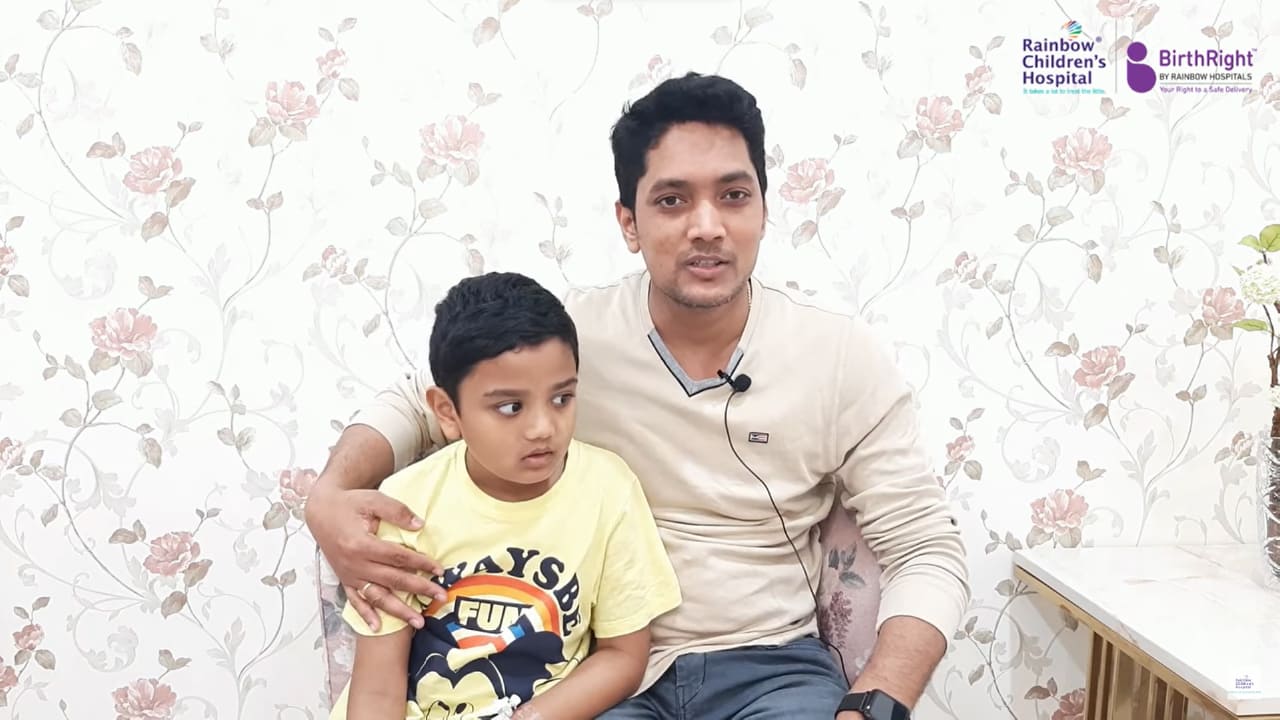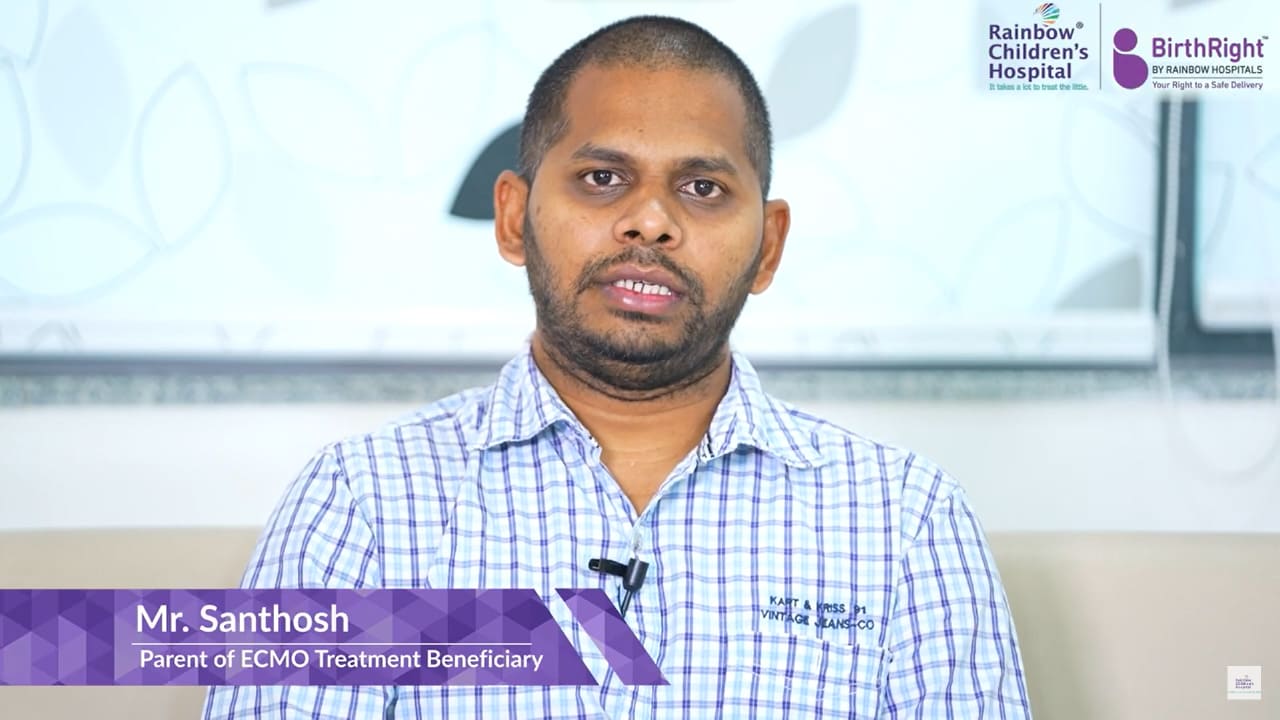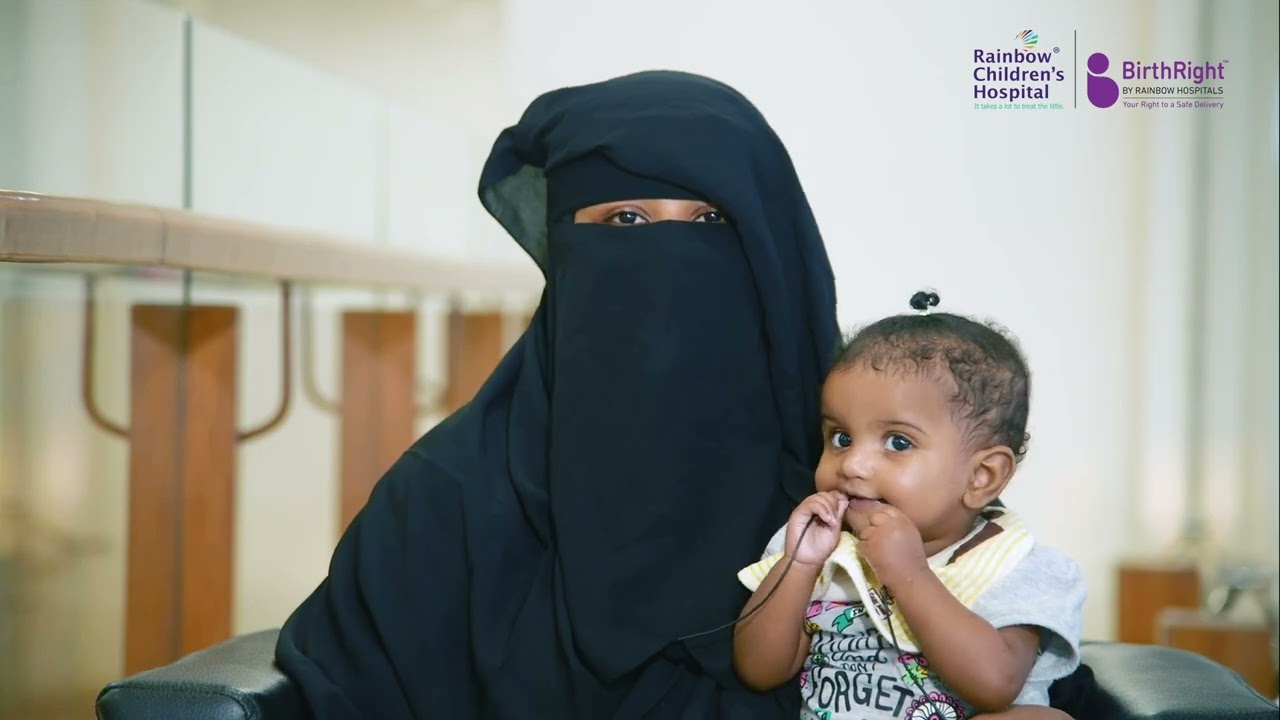Seamless support from diagnosis to post treatment care
Cerebrovascular Surgery
Overview
Cerebrovascular surgery in children is a specialized surgery performed to evaluate and treat all forms of vascular conditions that affect blood vessels supplying blood to the brain and spinal cord. These conditions can be life-threatening or severely disabling if not timely treated. The treatment helps in addressing problems related to restrictive blood flow and ruptured blood vessels and clots. It helps to treat vascular conditions of the brain or spine, including aneurysms, hemorrhages, arteriovenous malformations (AVMs), carotid artery stenosis, strokes and vascular brain tumors.
With expert care, many children with cerebrovascular diseases make a full recovery. The goal of the surgery is to prevent stroke or any complication, and restore blood flow so as to minimize neurological damage and avoid serious long-term effects.
Symptoms
While sometimes these cerebrovascular conditions are diagnosed even before your baby is born, on the other hand, in some cases you may not know your child has a cerebrovascular disease until they are a little older. Symptoms of cerebrovascular diseases in children may include:
- Headaches
- Muscle weakness
- Speech difficulties
- Abnormal movements
- Confusion
- Cognitive development problems
- Seizures
- Stiff neck
- Vomiting
- Vision impairment
- Dizziness
Diagnosis
Diagnosis of cerebrovascular conditions involves a combination of following tests:
- Neurological evaluation helps to identify symptoms such as weakness, numbness, speech difficulties, or visual disturbances.
- CT or MRI scans are used to visualize the brain and detect areas of bleeding, stroke, or vascular abnormalities.
- MR Angiography (MRA) is done to assess the blood vessels in the brain and neck.
- Digital Subtraction Angiography (DSA) is considered the gold standard for detailed vascular imaging.
Cerebrovascular Conditions We Treat
- Intracranial aneurysms
- Intracerebral Hemorrhage
- Arteriovenous malformations (AVMs)
- Cavernous malformations
- Moyamoya disease
- Pediatric Stroke
- Vascular malformation
Treatment
Cerebrovascular surgery is a life-saving treatment in acute and chronic vascular conditions of the brain and spinal cord. The treatment approach is based on the diagnosis and specific needs of the patient. These surgeries are often complex and require a multidisciplinary team of pediatric neurosurgeons, interventional radiologists, and neurologists.
Surgical treatment for cerebrovascular diseases include excision of malformations or fix deformities without causing as much damage to healthy brain tissue as possible.
Post-Surgery Care
The primary aim of post-surgery care immediately after cerebrovascular surgery is to detect and prevent neurological deterioration. This includes:
- Close monitoring to track neurological status and control on blood pressure
- Pain management and seizure prevention
- Imaging follow-up to understand surgical success or detect complications
- Rehabilitation therapy for motor, speech, and cognitive recovery
- Long-term follow-up with regular imaging and neurological assessments
- Lifestyle modifications and medical therapy to manage any risk factors
Why Choose Us?
- Highly experienced team of pediatric neurosurgeons specialize cerebrovascular surgeries
- Multidisciplinary team works closely with neurosurgeons and neurologist.
- Child-centric compassionate approach inspires us to create a child-friendly environment that helps young patients feel at ease throughout their treatment journey.
- Rehabilitation approach includes well-trained physiotherapists and rehabilitation specialists to provide a complete spectrum of spine care.
- 24/7 Emergency Care ensures immediate and expert intervention when needed.

Find a Doctor
Expertise you can trust, Meet our esteemed doctors who bring exceptional knowledge, compassion, and innovation to provide top-notch care for your health and well-being.
Our Hospitals and ClinicsOur Hospitals and Clinics
Rainbow Children's Hospital stands as a testament to the hospital's continual pursuit of excellence and innovation, providing specialized care for women and children.
Request a Call back
Tap to Fill FormRequest a Call back
Blogs
Discover our most recent health articles provided by our reliable experts.
What Are People Saying About Us
Embark on a journey of inspiration and hope with our patient success stories, complemented by informative videos from our dedicated doctors.
Quick Links
- Best Pediatric Neurosurgeons in Hyderabad
- Best Pediatric Neurosurgeon In Bangalore
- Pediatric Neurosurgeon in Delhi
- Pediatric Neurosurgeons in Chennai
- Best Pediatric Neurosurgeon in Vijayawada
- Best Pediatric Neurosurgeon in Vizag
- Best Pediatric Neurosurgeon in Hyder Nagar
- Best Pediatric Neurosurgeon in Marathahalli
- Best Pediatric Neurosurgeons in Guindy
- Best Pediatric Neurosurgeons in Currency Nagar
- Best Pediatric Neurosureon in Banjarahills
- Top Pediatric Neurosurgeons in India
- Best Treatment for Spina Bifida in Children, Hyderabad
- Best Treatment for Spinal Cord Injury in Children, Hyderabad
- Best Treatment for Arachnoid Cysts in Children, Hyderabad
- Best Treatment for Chiari Malformation in Children, Hyderabad
- Best Treatment for Glioblastoma Multiforme in Children, Hyderabad
- Best Treatment for Intraventricular Hemorrhage in Children, Hyderabad
- Best Treatment for Deep Brain Stimulation in Children, Hyderabad
- Best Treatment for Oligodendroglioma in Children, Hyderabad
- Best Treatment for Pilocytic Astrocytoma in Children, Hyderabad
- Best Treatment for Skeletal Dysplasia in Children, Hyderabad
- Best Treatment for Laser Ablation in Children, Hyderabad
- Best Treatment for Radiosurgery in Children, Hyderabad
- Best Treatment for Tethered Spinal Cord in Children, Hyderabad
- Best Treatment for Cavernous Malformations in Children, Hyderabad
- Best Treatment for Dysembryoplastic Neuroepithelial Tumor in Children, Hyderabad
- Best Treatment for Selective Dorsal Rhizotomy in Children, Hyderabad
- Best Treatment for Pial Synangiosis in Children, Hyderabad
- Best Treatment for Metopic Synostosis Trigonocephaly in Children, Hyderabad
- Best Treatment for Primitive Neuroectodermal Tumors (PNET) in Children, Hyderabad
- Best Treatment for Vein of Galen Malformation (VOGM) in Children, Hyderabad
- Best Treatment for Intraoperative magnetic resonance imaging (iMRI) in Children, Hyderabad
- Best Treatment for Spina Bifida in Children, Bengaluru
- Best Treatment for Spinal Cord Injury in Children, Bengaluru
- Best Treatment for Arachnoid Cysts in Children, Bengaluru
- Best Treatment for Chiari Malformation in Children, Bengaluru
- Best Treatment for Glioblastoma Multiforme in Children, Bengaluru
- Best Treatment for Intraventricular Hemorrhage in Children, Bengaluru
- Best Treatment for Deep Brain Stimulation in Children, Bengaluru
- Best Treatment for Oligodendroglioma in Children, Bengaluru
- Best Treatment for Pilocytic Astrocytoma in Children, Bengaluru
- Best Treatment for Skeletal Dysplasia in Children, Bengaluru
- Best Treatment for Laser Ablation in Children, Bengaluru
- Best Treatment for Radiosurgery in Children, Bengaluru
- Best Treatment for Tethered Spinal Cord in Children, Bengaluru
- Best Treatment for Cavernous Malformations in Children, Bengaluru
- Best Treatment for Dysembryoplastic Neuroepithelial Tumor in Children, Bengaluru
- Best Treatment for Selective Dorsal Rhizotomy in Children, Bengaluru
- Best Treatment for Pial Synangiosis in Children, Bengaluru
- Best Treatment for Metopic Synostosis Trigonocephaly in Children, Bengaluru
- Best Treatment for Primitive Neuroectodermal Tumors (PNET) in Children, Bengaluru
- Best Treatment for Vein of Galen Malformation (VOGM) in Children, Bengaluru
- Best Treatment for Intraoperative magnetic resonance imaging (iMRI) in Children, Bengaluru
- Best Treatment for Spina Bifida in Children, Delhi
- Best Treatment for Spinal Cord Injury in Children, Delhi
- Best Treatment for Arachnoid Cysts in Children, Delhi
- Best Treatment for Chiari Malformation in Children, Delhi
- Best Treatment for Glioblastoma Multiforme in Children, Delhi
- Best Treatment for Intraventricular Hemorrhage in Children, Delhi
- Best Treatment for Deep Brain Stimulation in Children, Delhi
- Best Treatment for Oligodendroglioma in Children, Delhi
- Best Treatment for Pilocytic Astrocytoma in Children, Delhi
- Best Treatment for Skeletal Dysplasia in Children, Delhi
- Best Treatment for Laser Ablation in Children, Delhi
- Best Treatment for Radiosurgery in Children, Delhi
- Best Treatment for Tethered Spinal Cord in Children, Delhi
- Best Treatment for Cavernous Malformations in Children, Delhi
- Dysembryoplastic Neuroepithelial Tumor in Children, Delhi
- Selective Dorsal Rhizotomy in Children, Delhi
- Pial Synangiosis in Children, Delhi
- Metopic Synostosis Trigonocephaly in Children, Delhi
- Primitive Neuroectodermal Tumors (PNET) in Children, Delhi
- Vein of Galen Malformation (VOGM) in Children, Delhi
- Intraoperative magnetic resonance imaging (iMRI) in Children, Delhi
- Spina Bifida in Children, Chennai
- Spinal Cord Injury in Children, Chennai
- Arachnoid Cysts in Children, Chennai
- Chiari Malformation in Children, Chennai
- Glioblastoma Multiforme in Children, Chennai
- Intraventricular Hemorrhage in Children, Chennai
- Deep Brain Stimulation in Children, Chennai
- Oligodendroglioma in Children, Chennai
- Pilocytic Astrocytoma in Children, Chennai
- Skeletal Dysplasia in Children, Chennai
- Laser Ablation in Children, Chennai
- Radiosurgery in Children, Chennai
- Tethered Spinal Cord in Children, Chennai
- Cavernous Malformations in Children, Chennai
- Dysembryoplastic Neuroepithelial Tumor in Children, Chennai
- Selective Dorsal Rhizotomy in Children, Chennai
- Best Treatment for Pial Synangiosis in Children, Chennai
- Best Treatment for Metopic Synostosis Trigonocephaly in Children, Chennai
- Best Treatment for Primitive Neuroectodermal Tumors (PNET) in Children, Chennai
- Best Treatment for Vein of Galen Malformation (VOGM) in Children, Chennai
- Best Treatment for Intraoperative magnetic resonance imaging (iMRI) in Children, Chennai
- Best Treatment for Spina Bifida in Children, Vijayawada
- Best Treatment for Spinal Cord Injury in Children, Vijayawada
- Best Treatment for Arachnoid Cysts in Children, Vijayawada
- Best Treatment for Chiari Malformation in Children, Vijayawada
- Best Treatment for Glioblastoma Multiforme in Children, Vijayawada
- Best Treatment for Intraventricular Hemorrhage in Children, Vijayawada
- Best Treatment for Deep Brain Stimulation in Children, Vijayawada
- Best Treatment for Oligodendroglioma in Children, Vijayawada
- Best Treatment for Pilocytic Astrocytoma in Children, Vijayawada
- Best Treatment for Skeletal Dysplasia in Children, Vijayawada
- Best Treatment for Laser Ablation in Children, Vijayawada
- Best Treatment for Radiosurgery in Children, Vijayawada
- Best Treatment for Tethered Spinal Cord in Children, Vijayawada
- Cavernous Malformations in Children, Vijayawada
- Best Treatment for Dysembryoplastic Neuroepithelial Tumor in Children, Vijayawada
- Best Treatment for Selective Dorsal Rhizotomy in Children, Vijayawada
- Best Treatment for Pial Synangiosis in Children, Vijayawada
- Best Treatment for Metopic Synostosis Trigonocephaly in Children, Vijayawada
- Best Treatment for Primitive Neuroectodermal Tumors (PNET) in Children, Vijayawada
- Best Treatment for Vein of Galen Malformation (VOGM) in Children, Vijayawada
- Best Treatment for Intraoperative magnetic resonance imaging (iMRI) in Children, Vijayawada
- Best Treatment For Spina Bifida in Children, Vizag
- Best Treatment For Spinal Cord Injury in Children, Vizag
- Best Treatment For Arachnoid Cysts in Children, Vizag
- Best Treatment For Chiari Malformation in Children, Vizag
- Best Treatment For Glioblastoma Multiforme in Children, Vizag
- Best Treatment For Intraventricular Hemorrhage in Children, Vizag
- Best Treatment For Deep Brain Stimulation in Children, Vizag
- Best Treatment For Oligodendroglioma in Children, Vizag
- Best Treatment For Pilocytic Astrocytoma in Children, Vizag
- Best Treatment For Skeletal Dysplasia in Children, Vizag
- Best Treatment For Laser Ablation in Children, Vizag
- Best Pediatric Neurosurgery Doctors in Sarjapur Road, Bengaluru
- Best Pediatric Neurosurgery Doctors in Himayatnagar, Hyderabad
- Best Pediatric Neurosurgery Doctors in Anna Nagar, Chennai
- Best Neurologist Doctor near me in Chennai
- Best Neurologist Doctor near me in Hyderabad
- Top Neurosurgeons in Anna Nagar , Chennai - Rainbow Children's Hospital








